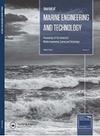インパクトレンチによるボルト締め付けの力学特性
IF 4.4
4区 工程技术
Q1 Engineering
引用次数: 0
Abstract
The tightening method using impact wrenches is used rather frequently to clamp bolted joints requiring high workability. The tightening torque is applied in the form of impact forces generated by a rotating hammer, which is powered by compressed air, hydraulic force or electric power. The primary advantage of impact wrenches is that the tightening operation can be completed in a short time. However, the accuracy of the generated bolt force is not so high, because of the complicated mechanical behavior caused by the action of impact forces. In this paper, the tightening process of bolted joints by use of impact wrenches is studied from the mechanical point of view, and the relationship between the nut rotation angle and the repeat count of impact forces is formulated. Based on the foregoing results, a practical tightening guideline is proposed by considering the effects of joint stiffness and impact friction coefficient that vary in the progress of the tightening operation.使用冲击扳手拧紧螺栓的力学特性
使用冲击扳手的紧固方法经常被用于对可加工性要求高的螺栓连接进行夹紧。拧紧扭矩以旋转锤产生的冲击力的形式施加,该锤由压缩空气、液压力或电力驱动。冲击扳手的主要优点是可以在短时间内完成拧紧操作。然而,由于冲击力的作用所引起的力学行为复杂,所产生的螺栓力的精度不是很高。本文从力学角度研究了冲击扳手紧固螺栓接头的过程,给出了螺母旋转角度与冲击力重复次数的关系式。在此基础上,考虑关节刚度和冲击摩擦系数在拧紧过程中变化的影响,提出了一种实用的拧紧准则。
本文章由计算机程序翻译,如有差异,请以英文原文为准。
求助全文
约1分钟内获得全文
求助全文
来源期刊

Journal of Marine Engineering and Technology
工程技术-工程:海洋
CiteScore
5.20
自引率
0.00%
发文量
0
审稿时长
>12 weeks
期刊介绍:
The Journal of Marine Engineering and Technology will publish papers concerned with scientific and theoretical research applied to all aspects of marine engineering and technology in addition to issues associated with the application of technology in the marine environment. The areas of interest will include:
• Fuel technology and Combustion
• Power and Propulsion Systems
• Noise and vibration
• Offshore and Underwater Technology
• Computing, IT and communication
• Pumping and Pipeline Engineering
• Safety and Environmental Assessment
• Electrical and Electronic Systems and Machines
• Vessel Manoeuvring and Stabilisation
• Tribology and Power Transmission
• Dynamic modelling, System Simulation and Control
• Heat Transfer, Energy Conversion and Use
• Renewable Energy and Sustainability
• Materials and Corrosion
• Heat Engine Development
• Green Shipping
• Hydrography
• Subsea Operations
• Cargo Handling and Containment
• Pollution Reduction
• Navigation
• Vessel Management
• Decommissioning
• Salvage Procedures
• Legislation
• Ship and floating structure design
• Robotics Salvage Procedures
• Structural Integrity Cargo Handling and Containment
• Marine resource and acquisition
• Risk Analysis Robotics
• Maintenance and Inspection Planning Vessel Management
• Marine security
• Risk Analysis
• Legislation
• Underwater Vehicles
• Plant and Equipment
• Structural Integrity
• Installation and Repair
• Plant and Equipment
• Maintenance and Inspection Planning.
 求助内容:
求助内容: 应助结果提醒方式:
应助结果提醒方式:


